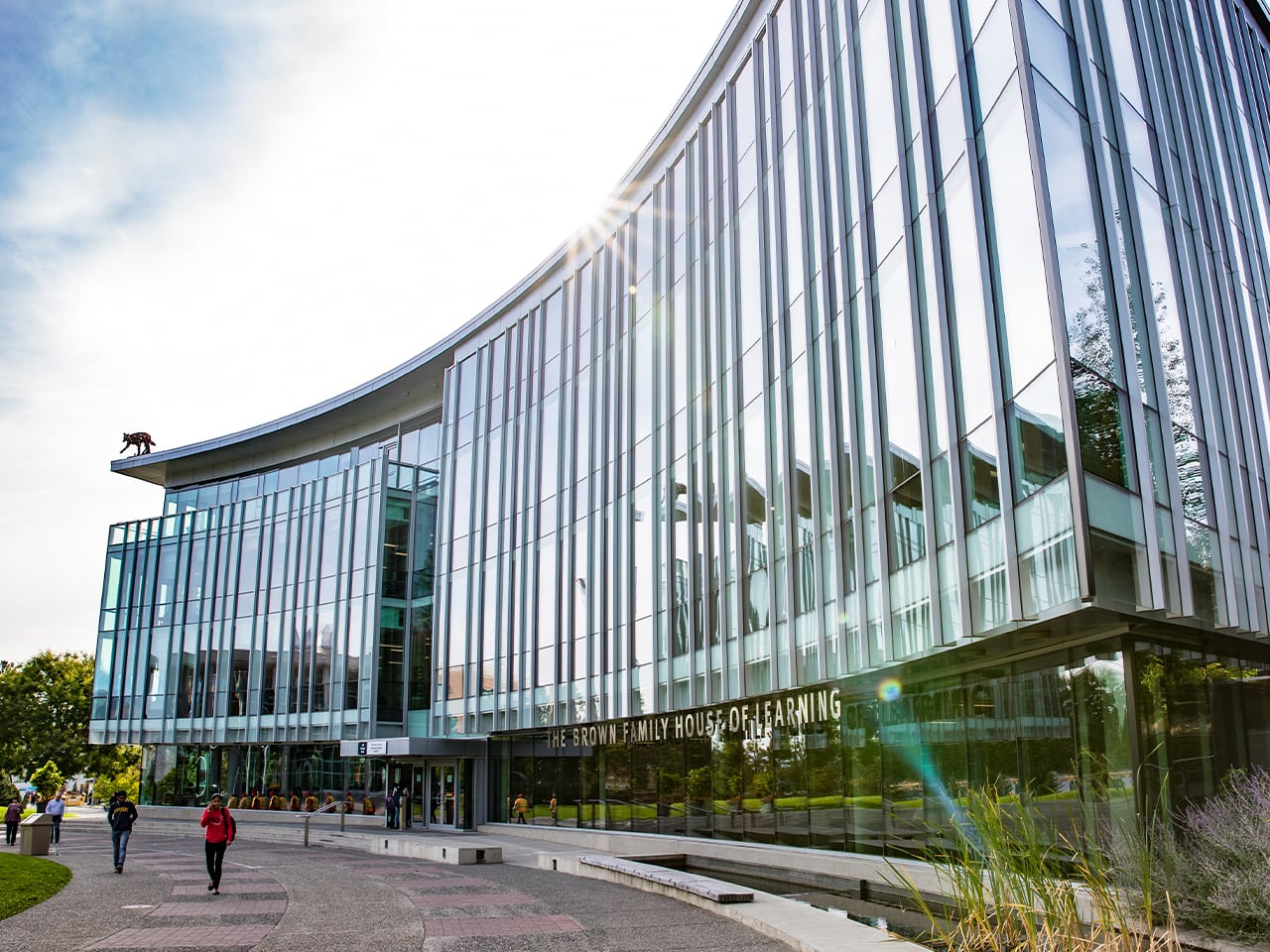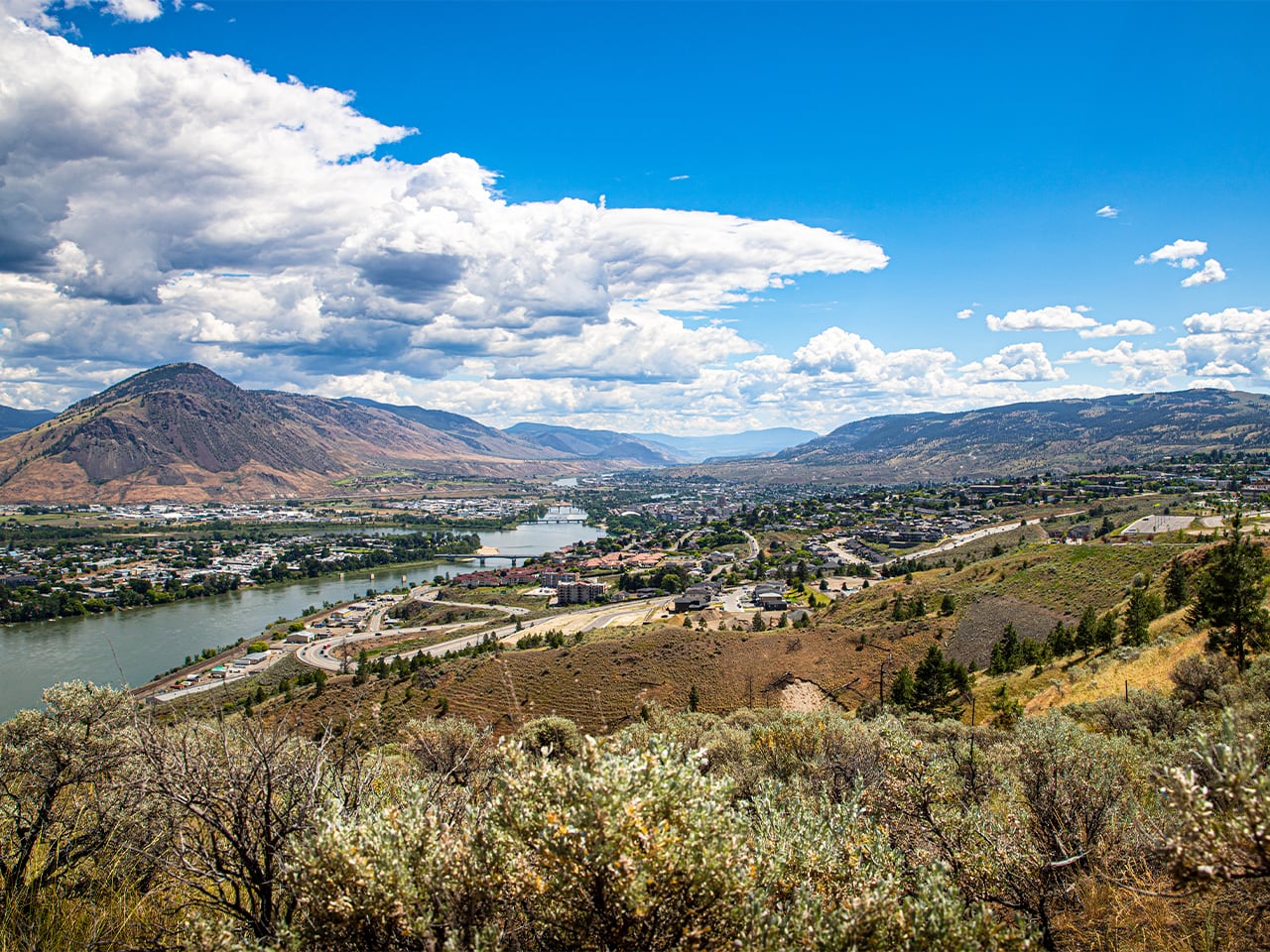Thank you for your interest in the Visual Arts program at TRU. This program is not currently accepting applications.
New creative processes and art history are yours to discover through studio and theoretical courses in a variety of media. Explore current art practices in 2D and 3D media, with emphasis on drawing, painting, colour theory, printmaking, photography, 3D design, sculpture and ceramics while earning a certificate that can bridge to a Bachelor of Fine Arts.
Expand your creative practice by exploring foundational and experimental techniques through our diverse set of second-year studio courses.
From theory to gallery
Experiment with a variety of mediums and focus on your studio work away from distraction. Find inspiration and motivation within your studio peer group.
- Advance your skills in paint mixing, application techniques and complex approaches with everything from watercolour to oil.
- Explore printmaking with silkscreen, etching and develop your photographic media expertise within the dark room and processing studio.
- Work within a range of materials, objects, techniques, and ideas fundamental to three dimensional aspects of visual art.
- Gain a working knowledge of topics related to historical and contemporary practices.
- Drawing from this to define and discuss works in a present-day context will become second nature.
Participate in art shows on campus and locally, while showcasing your work alongside other students and your professors. Take advantage of opportunities to be featured in international galleries while earning credits towards a degree or choose to study abroad for a semester.

Learn from accomplished studio artists and explore new concepts to hone your individual style.
Critical abilities in supportive communities
Participate in group critiques and class seminars, engage with other artists, fast-tracking growth, sharing inspiration and complementing your development as a studio artist. An emphasis is placed on establishing your critique skills and analytical research to address the subject, content and form of yours and others’ work in both visual and verbal manners. Nurture your creativity while surrounding yourself with other producing artists, sharing ideas, constructive feedback and camaraderie among classmates.
Create your own personal direction
Build on your fundamental skills, essential in all visual art and for conceptual expression. In this productive studio program, traditional techniques find contemporary applications. You’ll become comfortable with diverse tools and materials, and apply techniques in individual projects.
Benefit from the expansive equipment available to you in the studios:
- The dark room
- Lighting room
- Painting studio
- Professional gallery
- Woodworking shop and more.
Learn all about line, shape, value, texture and colour, and organizing principles of composition. Enjoy an increasingly creative and individualized approach to your work through a supportive environment and an exploration in a range of media.
Students qualify for the TRU Visual Arts Diploma on completion of 60 credits, 48 of which are in Visual Art.
At least 21 of the Visual Art credits should be achieved at second year level. An overall grade point average of 2.33 is also required for Diploma status.
It is recommended that Diploma students complete 2D and 3D Foundation courses:
- VISA 1010
- VISA 1030
- VISA 1030
Drawing 1 and 2:
- VISA 1210
- VISA 1220
before progressing to the second year of Visual Arts courses.
Diploma students must also complete the first year History of Art courses:
- VISA 1110
- VISA 1210
as well as
- ENGL 1100
- and one of ENGL 1110, 1120, 1140, 1210 or VISA 1500 before the end of the second year of study.
Electives to complete the required credits may be selected from the other subject areas. Students who complete the Visual Arts Diploma with a grade point average of 2.33 are considered to have achieved third year standing and may progress into third year of the BFA Program.
Open admission
Admission to Visual Arts Studio Certificate
If you don’t meet the requirements, high school graduates can apply and be admitted to this program while upgrading at TRU.
Mature students without a high school diploma (or equivalent) can work towards completing their BC High School Graduation Diploma while in this program through TRU courses.
Students who do not qualify for mature student status can apply for the TRU University Preparation program to complete their BC High School Graduation Diploma.
Talk to a student recruiter about your options. You may be eligible for free tuition. Or learn more about upgrading.
Career Options / Laddering options
Create your future
Depending on the level of work you achieve and your previous education and experience, pursue a range of opportunities including:
- Concept artist
- Studio artist
- Muralist
- Gallerist
- Commercial artist
- Portrait artist
- Commissioned public artist
- Storyboard Artist
- Educator
- Artistic studio practice
- Arts administration and education
- Illustration and mural work
- Studio management
- Arts advocacy
Build your portfolio during this diploma program in preparation for laddering into other programs and applying for varied career opportunities. Your education in fine arts can open up a number of career opportunities, from illustration and animation to painting and sculpting. Other career choices include teaching, sales and advertising, commercial design, gallery curators and much more.
Laddering options
Courses taken during this certificate count towards a Bachelor of Fine Arts, and a Bachelor of Arts with a Minor in Visual Arts, or other university degrees at the same time.
Bachelor of Fine Arts (Visual Arts)
Bachelor of Arts, Minor in Visual Arts
Creating artwork is a very personal endeavour. Your professors can help you refine your skills and avoid difficulties that some artists might have in the field without the benefit of education.
Discover any weaknesses in your craft, fast-track the enhancement of your strengths, and learn how to market your skills. Because a career in art can be a challenging path, it can be invaluable to receive advice from professors who have enjoyed a successful record. You want to hone your skills quicker with the help of other classmates and expert lecturers in expansive studios, designed to inspire and support.
“I benefited most from the undergraduate research opportunities at TRU that, when supported by dedicated professors, offered me an unrivalled education experience that brought me to Europe, to the Yukon, and to continue to practice Fine Art after graduation.”
—Levi Glass, BFA 2017 graduate
“I recommend TRU because of the quality of education possible when classes are smaller and students are more than just a number to their instructors. TRU is also on the forefront of undergraduate research, something which played a large part in my success while there as well as in graduate school.”
—Garnet Dirksen, BFA 2017 graduate
“Technically, the skills you learn are invaluable. The faculty here are encouraging and they push you to get out of your comfort zone. It’s a very caring community of teachers—we’re lucky to have them.”
—Carol Schlosar, current BFA student
“Something I’m very passionate about is involving the community in art, and just seeing what it does to people. That’s part of why I’m taking the BFA, to learn how you can bring art to the community. To bring them screen printing and have them be part of the printmaking process and then take away something, is awesome.”
—Ashya Cross, current BFA student
“What I love about teaching is creative problem solving with students on their artwork and I am so happy when the image has impact! My advice to students is that your art education is a special and precious time to focus on your creativity. When I’m not marking, you’ll find me in the studio making large copperplate etchings.”
—Darlene Kalynka, Associate Professor
What keeps me teaching and instills hope for the future is watching students come up with truly novel solutions to the tasks I hand them. Often these ideas reflect their interests instead of mine and sets them on a path of discovery well beyond the one course. When I am not grading assignments, I spend my time designing, everything, from floorplans and furniture to class presentations. Luckily, my job reflects my passions in that I deal with imagery and design. And its critique! My number one piece of advice to students is to stop worrying what other people think about what they look like, what they do or don't do. Pursue what fascinates you, with enthusiasm and rigor. If you love what you do, it won't seem like work and it may just become a meaningful career.
—Terryl Atkins, Senior Lecturer
Lawrence honoured for mentorship
What does it take to be an exceptional undergraduate research mentor? TRU’s Donald Lawrence sets the standard, and as a result, is the recipient of the 2017 Undergraduate Research Mentor Award. The award celebrates faculty members who actively help students explore, inquire and engage in new knowledge creation by providing meaningful guidance and support. Lawrence embodies these ideals, a fact clearly communicated by those who nominated them for the distinction.
Program Details
- Credential
- Visual Arts Diploma
- Delivery
- Kamloops
- Length
- Two years
- International
- Open to international applicants



